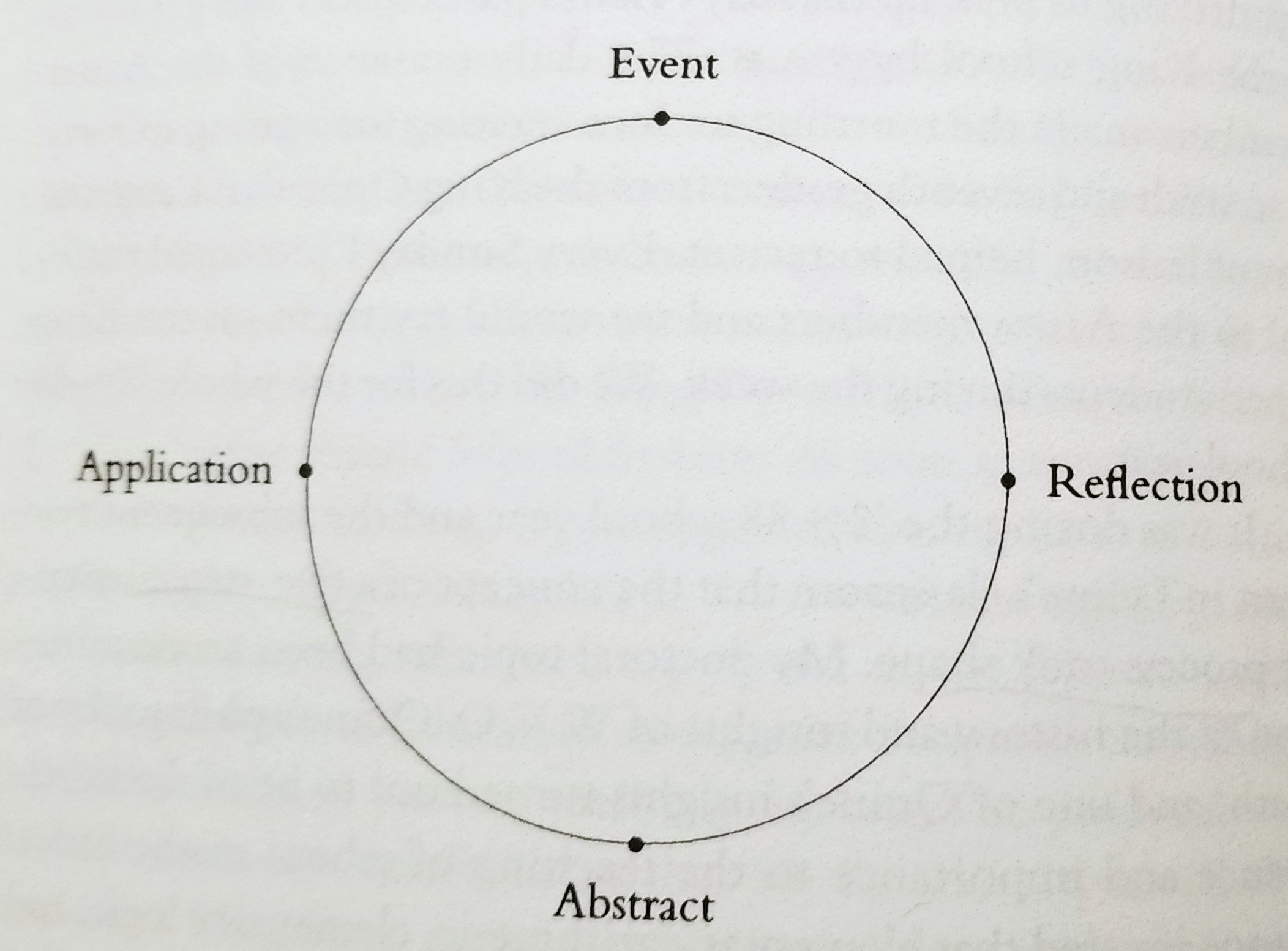I was asked last week, preparation for professional development work I had been asked to do with some high school science teachers, to describe ways that classroom discussion could be used in secondary science classrooms.
To my surprise, I was able to delineate and describe a typology of four types of conversations that could be powerful and effective in secondary science classrooms. They are:
- Conversations that gather, focus student experiences or insights
- Conversations that make real the processes of science and reflect science as a human (as opposed to received) activity.
- Conversations that deepen and expand observations made during classroom demonstrations or laboratory activities.
- Conversations that make visible the processing of learning itself.
This post is the first part of a series discussing each of these types of conversations.
Part 1: Conversations that gather and focus student experiences or insights
For the sake of discussion (all puns intended), we are going to imagine a life science classroom that is working to understand homeostasis.
As a warm up or “Do Now” activity, the students are asked to imagine that they are members of a music group or band. Or that they were members of a sports team. While they are in the middle of performing or playing, they need to to communicate with their band mates or teammates while they are giving a performance or playing a game.
This thought experiment attempts to addressing the guiding questions: How could they do this? What challenges would they face?
Students would be given time to think about this and then make some notes about their thoughts. Once they have done so, they can be invited to share their thoughts and notes with a classmate or two. Lastly, the teacher can then facilitate a discussion that begins with the small group sharing.
The teacher’s work should be shaped by whatever he/she considers essential or enduring understandings (in the terms of McTighe and Wiggins) about homoestasis. If it were me, I would be listening for: a need to respond to changes in the internal and/or external environment; transmitting this change to the cells or organs that need to respond; and coordination of this response. (Note: this is what I consider to be essential. Another teacher would definitely state homeostasis in different terms).
So, this classroom discussion would serve multiple purposes:
- It would challenge and validate the thinking performed by the students individually and with their peers.
- It would raise additional questions or concerns, in order to deepen the students’ engagement with and understanding of the essential understandings around homeostasis.
- it would serve as a transition to the next activity.
The set of strategies expressed in this scenario are shaped by the work of W. V.O. Quine’s philosophy of mathematics as synthesized through the work of Robert P. Moses in Radical Equations.
Moses talks about the importance to student understanding of a transition from what he calls “people talk” to “regimented language,” language that is abstract and consistent with a particular area of study. This type of classroom discussion sets the table in the students being able to make what looks like a natural or organic transition from the “people talk” of the students grappling with the practical problem of communication among group members to the “abstract talk” of homeostasis.
The set of strategies expressed in this scenario are shaped by the work of W. V.O. Quine’s philosophy of mathematics as synthesized through the work of Robert P. Moses in Radical Equations. Moses talks about the importance to student understanding of a transition from what he calls “people talk” to “regimented language,” language that is abstract and consistent with a particular area of study.

This type of classroom discussion sets the table in the students being able to make what looks like a natural or organic transition from the “people talk” of the students grappling with the practical problem of communication among group members to the “abstract talk” of homeostasis.
The next three parts of this series will deal with the other types of classroom discussions. Speaking of discussions, be sure to participate by leaving a comment. Here are links to all four parts:
Part 3
Part 4
2 thoughts on “Classroom Discussions in Science, Part 1”